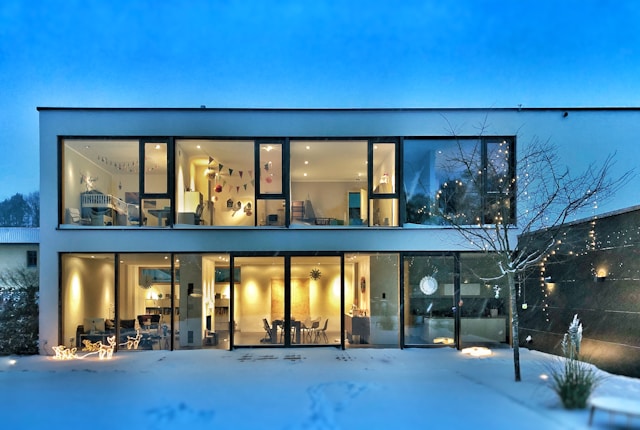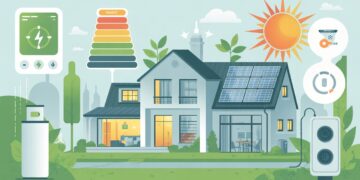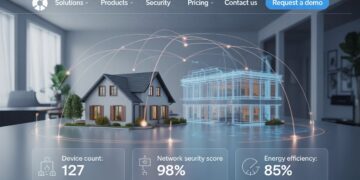Making your home more energy-efficient is one of the best ways to reduce utility bills while also helping the environment. By implementing a few simple changes and investing in energy-saving upgrades, you can significantly cut down on wasted energy. Whether you’re looking for quick fixes or long-term solutions, this guide will provide practical tips to improve your home’s energy efficiency and save money.
Assessing Your Home’s Energy Use
Before making any changes, start by evaluating how much energy your home consumes.
- Conduct an Energy Audit: A professional energy audit or a DIY assessment can help identify areas where energy is being wasted.
- Check Your Utility Bills: Look for patterns of high energy usage and pinpoint specific areas for improvement.
- Inspect Doors and Windows: Drafts and leaks can lead to significant energy loss, increasing heating and cooling costs.
Quick and Low-Cost Energy-Saving Tips
If you’re looking for simple and cost-effective ways to make your home more energy-efficient, start with these tips:
- Switch to LED Light Bulbs: LED bulbs use up to 75% less energy than traditional incandescent bulbs and last much longer.
- Use Power Strips: Unplugging electronics when not in use or using smart power strips can prevent phantom energy drain.
- Adjust Thermostat Settings: Lower your thermostat in the winter and raise it in the summer to reduce HVAC energy consumption.
- Close Curtains and Blinds: Keep your home cool in summer and warm in winter by using thermal curtains to block heat transfer.
Improving Insulation and Sealing Leaks
One of the most effective ways to reduce energy waste is by properly insulating your home.
- Seal Gaps Around Windows and Doors: Use weather stripping and caulk to eliminate drafts and improve energy efficiency.
- Upgrade Attic and Wall Insulation: A well-insulated home retains heat in the winter and stays cool in the summer.
- Install Door Sweeps: Prevent air leaks at the bottom of exterior doors to maintain a comfortable indoor temperature.
Smart Home Technology for Energy Efficiency
Technology can help you manage energy use efficiently and conveniently.
- Use a Smart Thermostat: Devices like Nest or Ecobee automatically adjust temperature settings to optimize energy savings.
- Install Motion Sensor Lighting: Reduce unnecessary electricity consumption by using motion-activated lights indoors and outdoors.
- Upgrade to Smart Power Strips: These strips detect when devices are not in use and automatically cut off power.
Energy-Efficient Appliances and Upgrades
Investing in energy-efficient appliances and home upgrades can lead to long-term savings.
- Choose ENERGY STAR-rated Appliances: These products consume less energy and operate more efficiently.
- Replace Old HVAC Systems: Upgrading to an energy-efficient heating and cooling system can lower monthly energy costs.
- Install Double-Pane Windows: These windows provide better insulation and reduce heat loss during winter and heat gain during summer.
Renewable Energy Solutions
For homeowners looking to make a long-term investment in energy efficiency, renewable energy solutions can be a great option.
- Consider Solar Panels: Solar energy can significantly reduce electricity bills and may qualify for government incentives.
- Explore Wind or Geothermal Energy: Depending on your location, these renewable energy options can provide sustainable power.
- Take Advantage of Incentives: Many governments offer rebates and tax credits for installing renewable energy systems.
Water Conservation for Lower Energy Bills
Reducing water waste not only conserves natural resources but also lowers energy costs associated with heating water.
- Install Low-Flow Faucets and Showerheads: These fixtures reduce water consumption while maintaining strong water pressure.
- Use an Energy-Efficient Water Heater: A tankless or ENERGY STAR-certified water heater can improve efficiency and cut heating costs.
- Fix Leaks Promptly: Even small leaks can waste a significant amount of water over time, leading to higher utility bills.
Conclusion
Making your home more energy-efficient doesn’t have to be expensive or complicated. By implementing these strategies, from simple changes like using LED bulbs to long-term upgrades such as installing solar panels, you can significantly reduce your energy bills while making a positive impact on the environment. Start with small steps today and enjoy the benefits of an energy-efficient home!









